Lead Manager Guide
This guide will take you through the main steps of how to integrate the Lead Management app into your Simbla site.
The Lead Manager allows you to embed a contact form into your Simbla website, a form which allows your users to fill in their contact details. Your users' details, in addition to their source and other valuable data, is then displayed in Simbla's Lead Manager App, where you can edit, manage and track your leads' status.
Let’s Get Started!
1. Embedding the Lead Form widget into your Simbla's website
First, take the steps of our "How to connect an application" guide - choose the Lead Manager App to add it to your Simbla App dashboard.
Go back to your Simbla site editor, and click on "Pro" to go into Simbla's Pro mode.

The Pro Mode will open up more elements that you can choose to add to your website.
From the element bar, click on "Application Widgets" and you should see your Lead Manager widget, which is actually a web form.
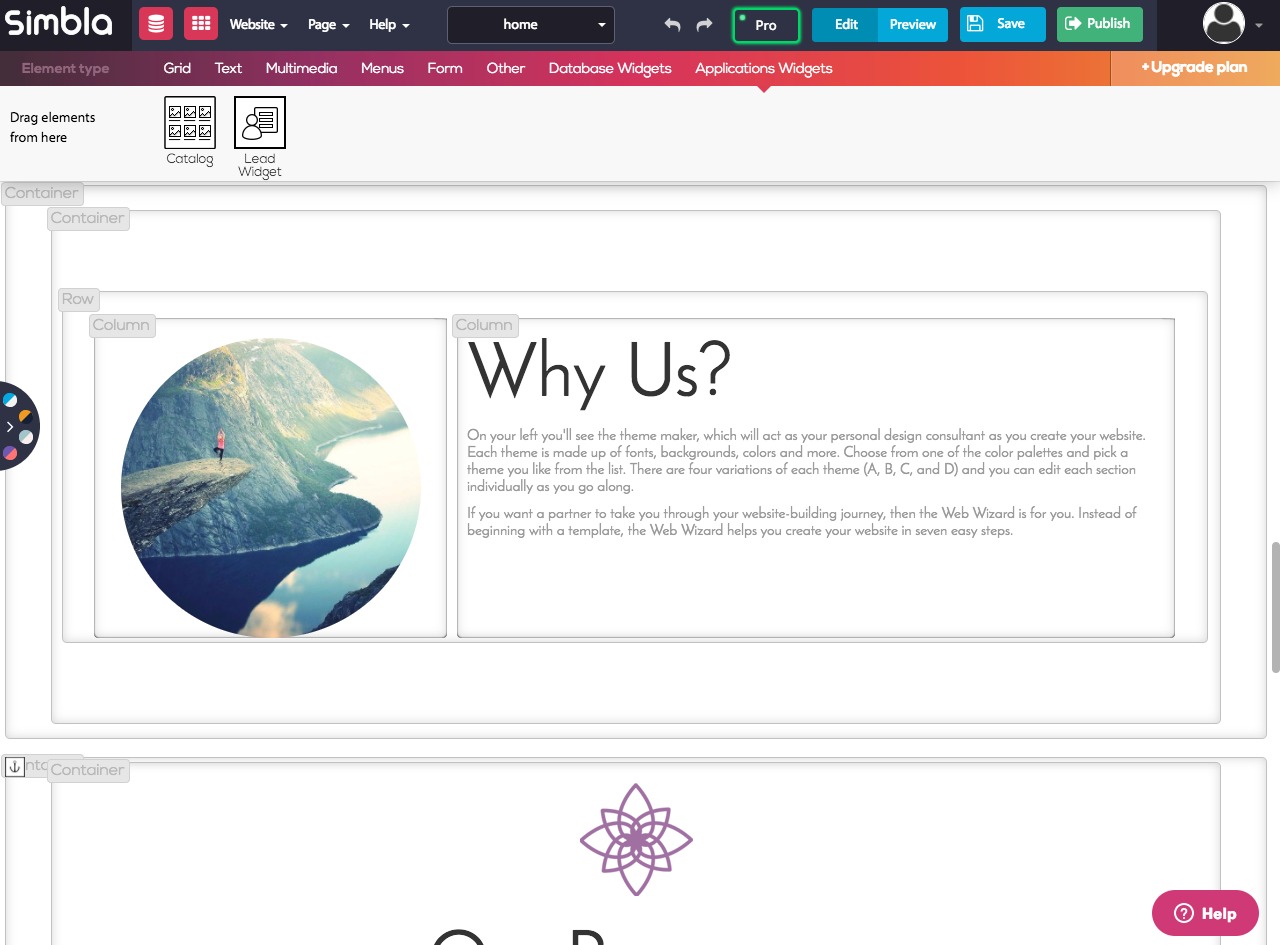
To add the Form to your site, simply drag the “Lead Widget” to the desired location on your page, just like you would do with any other Simbla element.
The visual form of the widget in your Simbla website editor (as well as some other Application Widgets) is different than you are used to. Don't be worried if you can’t see the actual Form - this means it’s working like it should. The image below demonstrates how the Simbla editor should look if you’ve successfully added the Form to your site.
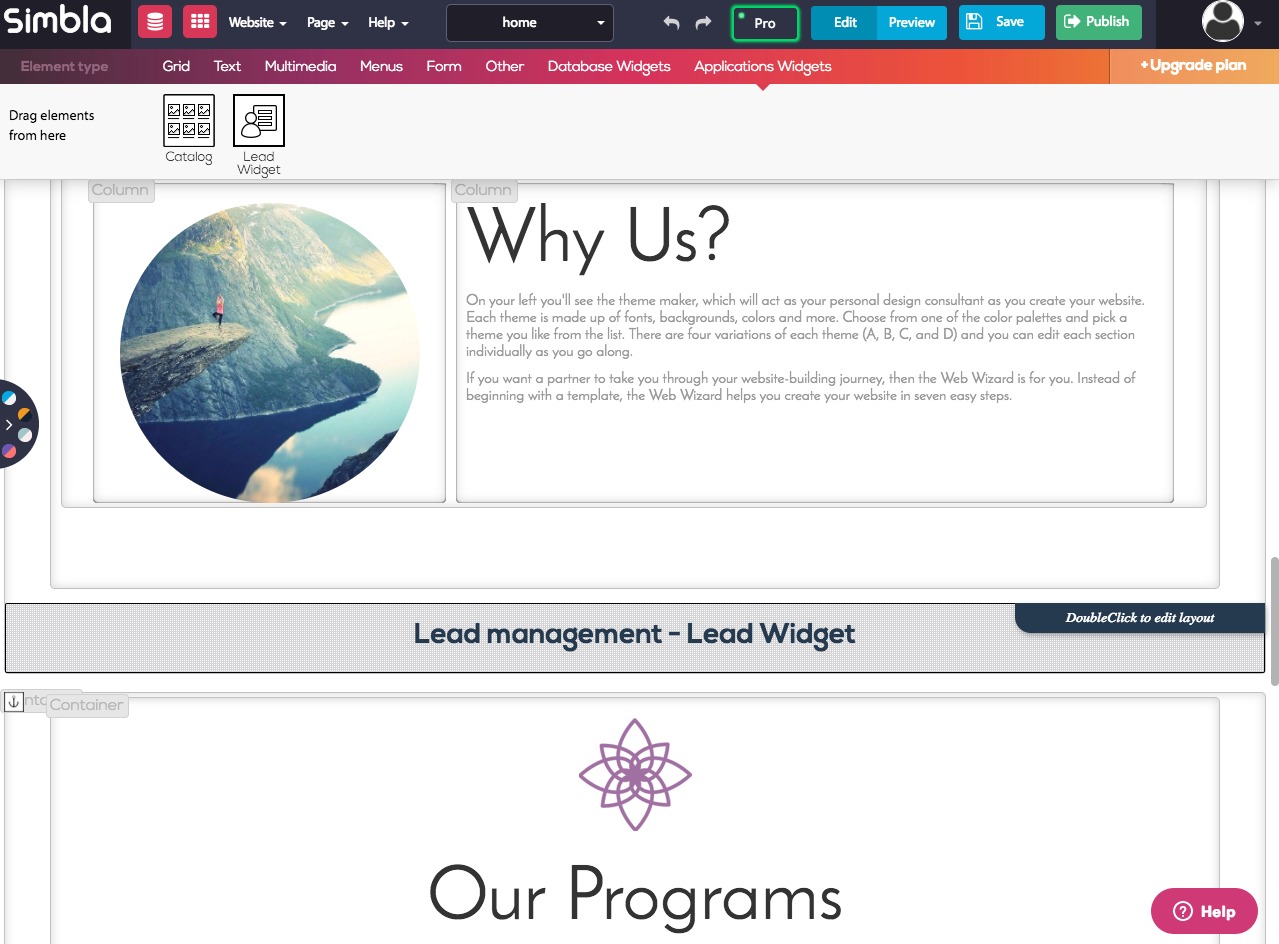
To see the fully-functional page, please go to Preview mode and hit the "View Live" button on top. You can also go directly to your page's URL (but don't forget to publish your page first).
The default Lead Manager Form consists of 4 fields: First Name, Last Name, Email and User's Comments.
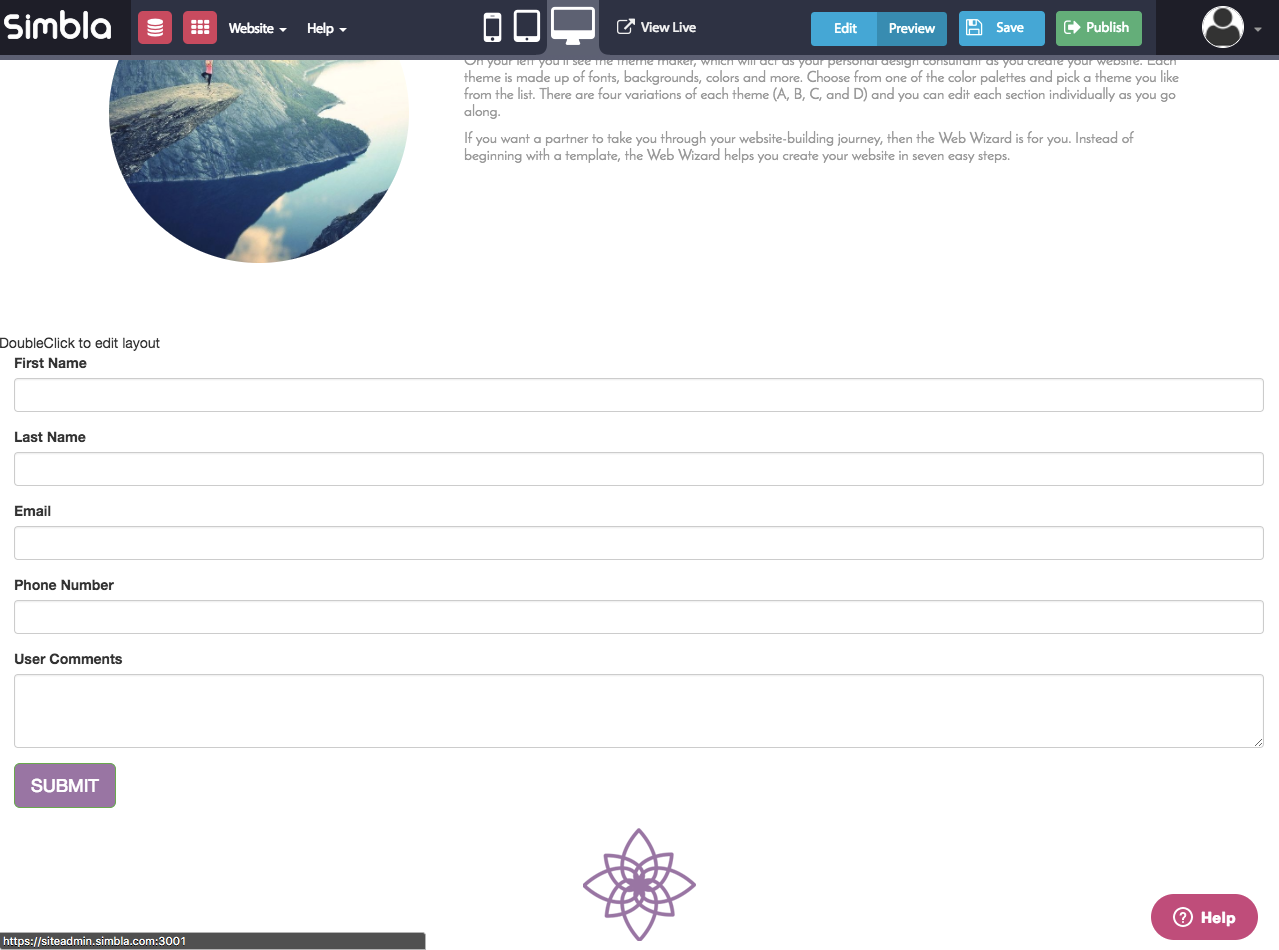
2. Visit your Lead Manager panel
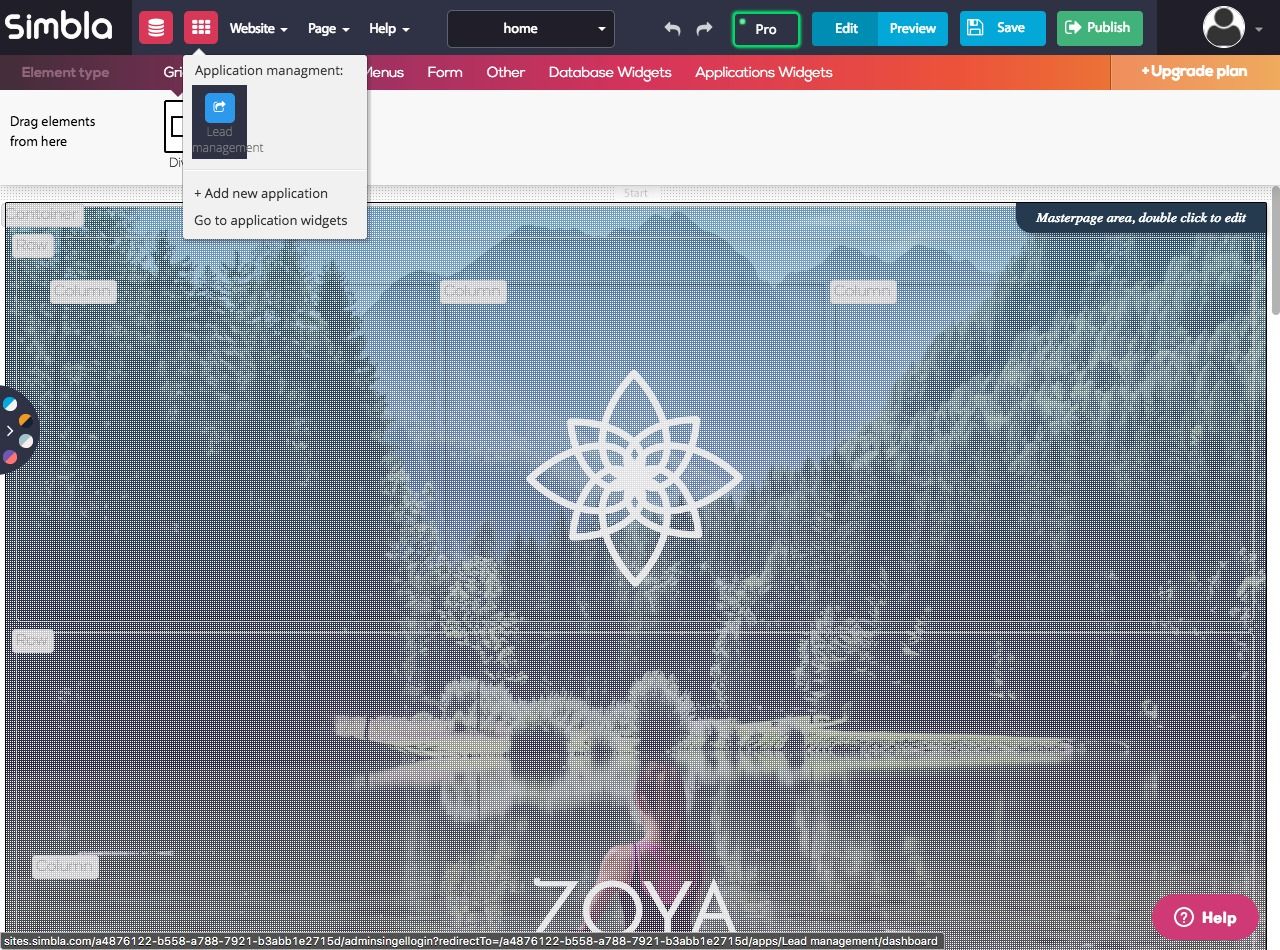
Click on the application icon from the top bar and choose the Lead Manager app.
The app management consists of three different screens:
- Dashboard
- Leads
- Lead Card
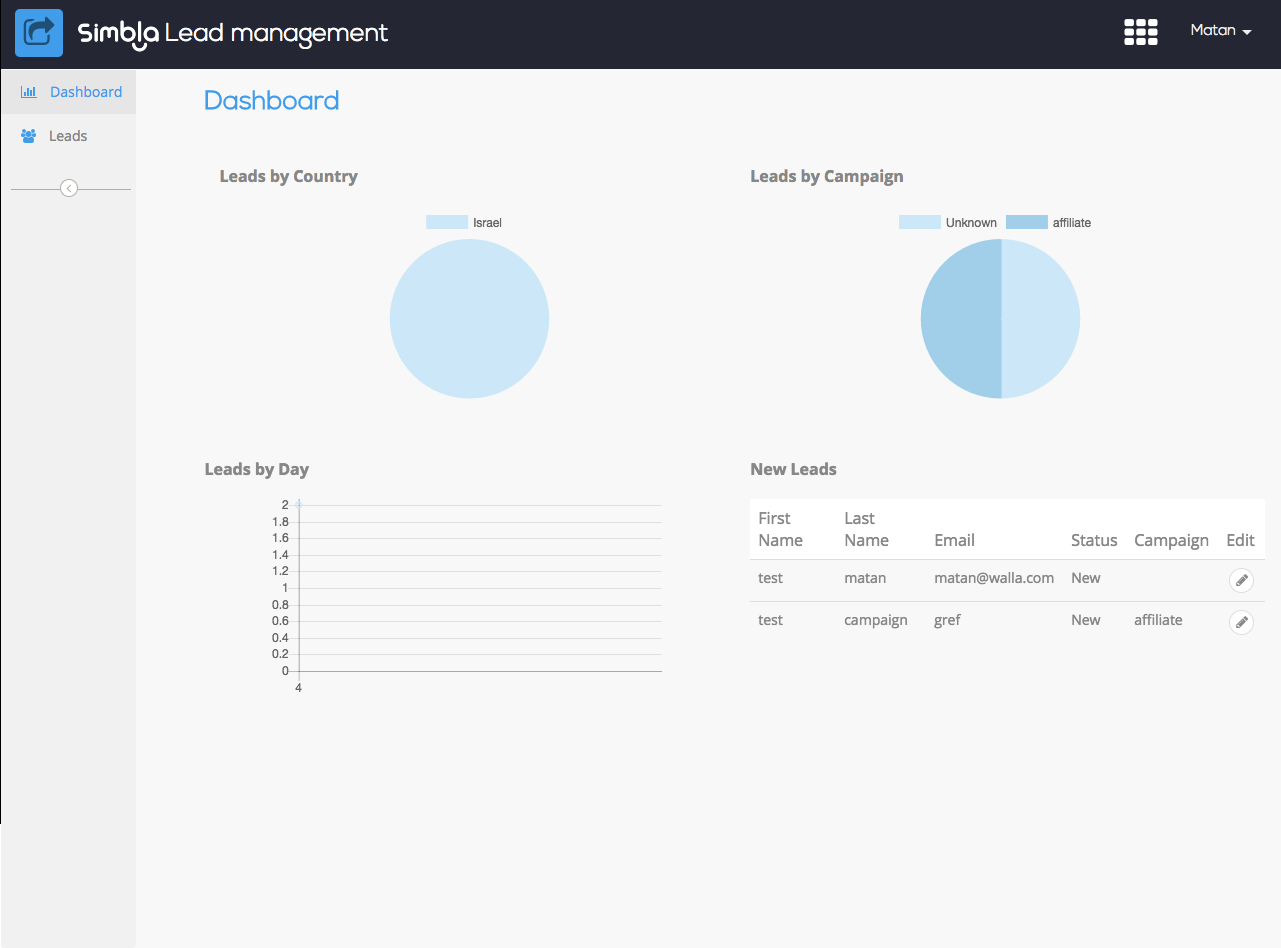
Dashboard: Showcases reports considering your leads. The default reports include: Total Leads by Campaign, Total Leads by Country, Total Leads in the last 30 days and a table including a list of Leads with the status "New" (from website).
Note! Simbla Apps include sample data. If you would like to delete these items, please go to "Leads" on the left toolbar and delete each of the existing leads.
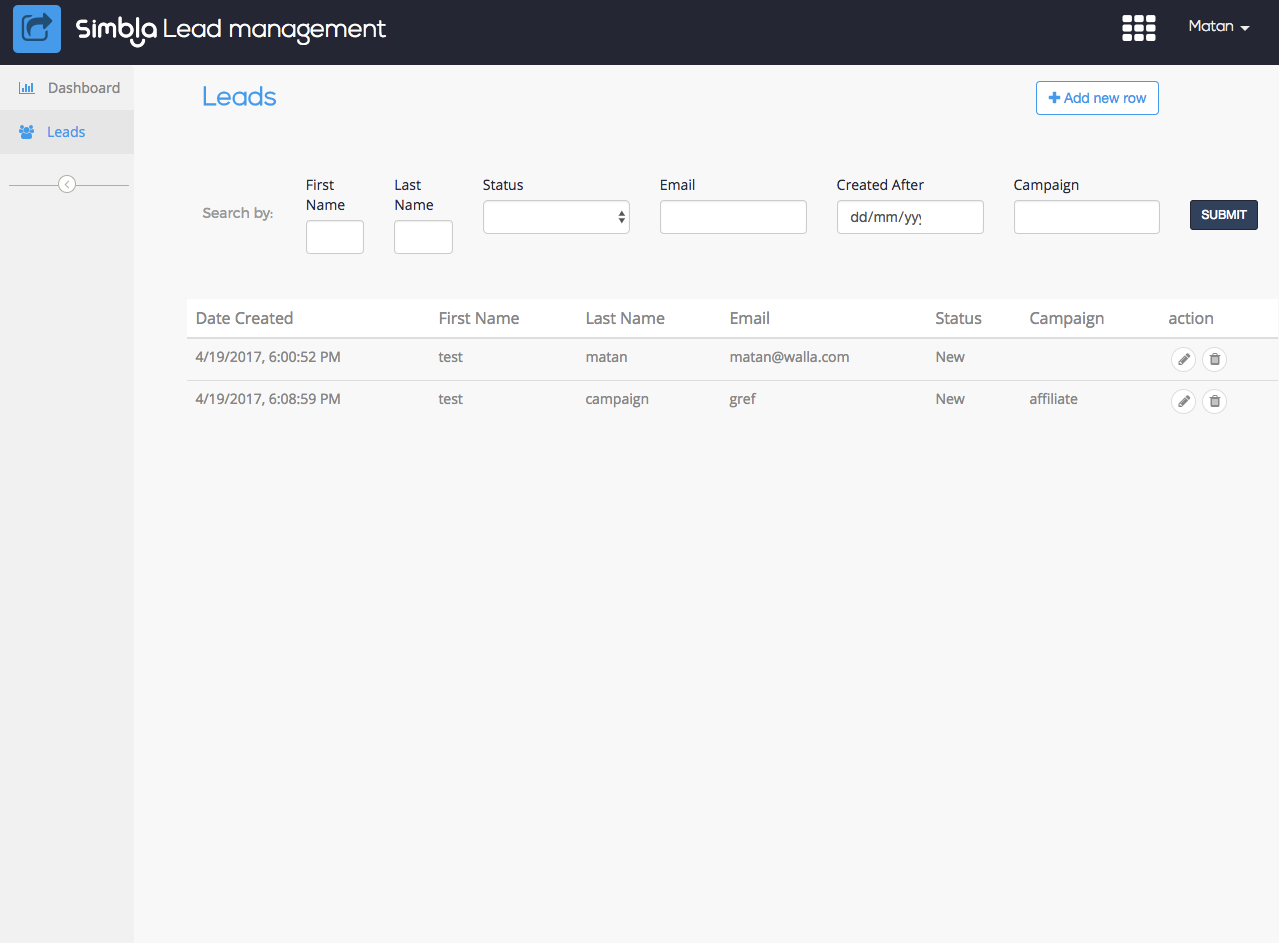
Leads: A screen where you can filter your leads in accordance with certain criteria.
Click on "Edit" to edit your Lead Card.

A Lead Card: The Lead Card includes all of the necessary information pertaining to your leads - information inserted by a user when he registered through your website, valuable data about him provided by the web browser, and also, internal information which you have edited.
The Campaign and Country fields indicate the sources of your leads (see advanced features below).
The Status field is a combo-box allowing you to filter your leads in accordance with the sale progress.
Pay special attention to the "Internal Comments" field, which is actually a chatbox for you and your users. You can document any progress or actions you did with respect to a certain lead - easily write any comments in the upper field and hit the "paper-plane" icon to keep it.
Don't forget to save any changes made using the save button below!
3. Advanced Settings - Set Campaigns
In order for you to be able to track your leads more effectively, we added a possibility to track the sources of each of your leads.
Two of the fields which already provide information on your leads are the Country and Referrer. In the next few paragraphs we will learn how to set a tracker code for leads coming from certain campaigns from which you would like to measure effectiveness.
In order for Simbla to identify a Campaign, you will need to add certain parameters to the URL referring to your website:
If your website's address is usually: http://www.website.com, then you should add /?utm_campaign=YourCampaignName to the URL in order for Simbla to be able to identify Campaigns, and for you to both be able to filter and create reports relating to this campaign. If you would like to track a landing page within your website, which is not your homepage, such as http://www.yourwebsite.com/landing, then add ?utm_campaign=YourCampaignName immediately after: http://www.yourwebsite.com/landing?utm_campaign=Spring2017.
Please note!:?utm_campaign is a standard form of measuring campaigns, and the referring link might already include it if you are using a popular supplier, such as Google, Bing etc. Please check with your provider if it's already included - if so, you won't have to take the previous step.
Example: You have recently launched a new Pay Per Click campaign through CNN's website, named "Spring2017", and you would like to identify which of your leads reached your website from this specific campaign. When setting this campaign with CNN, refer your clicks to http://www.yourwebsite.com/?utm_campaign=Spring2017 instead of the usual form of http://www.yourwebsite.com.

